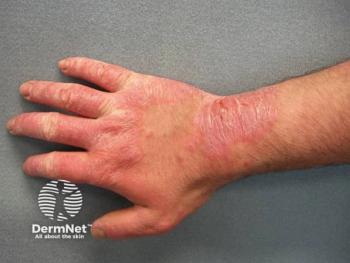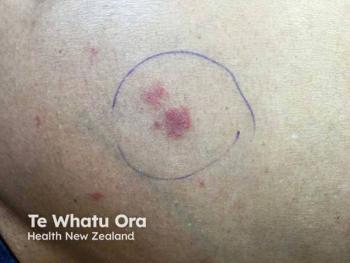
Key Takeaways for Personalizing Atopic Dermatitis Treatment
An expert discusses how successful atopic dermatitis management requires patient-centered care and shared decision-making, emphasizing that treatment selection should match disease impact rather than just body surface area, with both biologics and JAK inhibitors offering safe and effective options.
Episodes in this series

Video content above is prompted by the following:
Patient-centered care and shared decision-making represent fundamental principles in modern atopic dermatitis management, recognizing that treatment success depends not only on clinical efficacy but also on patient acceptance, adherence, and lifestyle compatibility. Health care providers must move beyond traditional body surface area calculations to assess disease impact comprehensively, including effects on sleep quality, occupational function, psychological well-being, and overall quality of life. The abundance of available systemic therapies requires individualized treatment selection based on patient age, comorbidities, preferences, and specific disease characteristics.
The evolution of atopic dermatitis management has provided clinicians with numerous safe and effective systemic treatment options, including multiple biologic agents and JAK inhibitors. Treatment selection should prioritize matching therapeutic interventions to individual patient needs rather than following one-size-fits-all approaches. Factors such as injection anxiety, housing stability, travel requirements, and occupational demands must be integrated into treatment planning to optimize long-term success. Both biologics and JAK inhibitors offer excellent therapeutic options, with selection depending on patient-specific factors and clinical circumstances.
Successful atopic dermatitis management requires ongoing commitment to patient education, regular monitoring, and treatment adjustment based on response and changing patient needs. Health care providers must stay current with emerging treatment options while maintaining focus on fundamental principles of disease recognition, particularly in diverse patient populations where clinical presentations may vary. The ultimate goal remains achieving optimal disease control while maintaining patient satisfaction and treatment adherence through personalized, patient-centered care approaches that address both clinical and psychosocial aspects of this chronic inflammatory condition.
Newsletter
Like what you’re reading? Subscribe to Dermatology Times for weekly updates on therapies, innovations, and real-world practice tips.




















